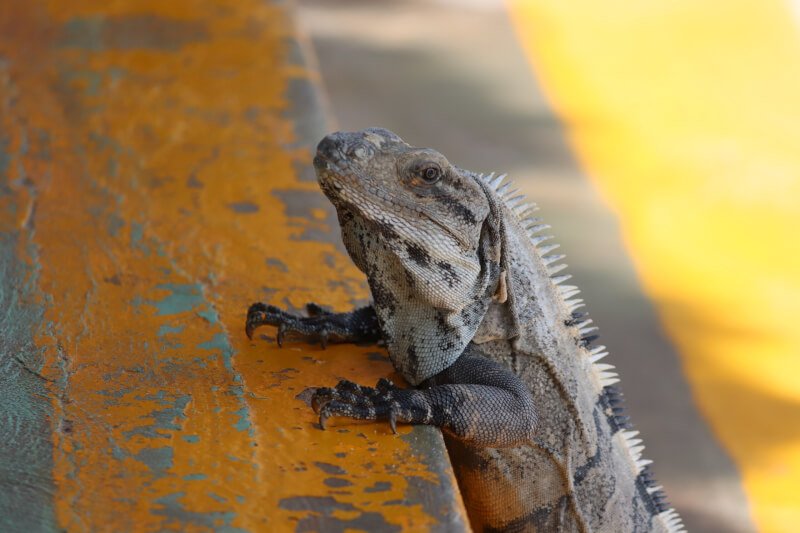Are you a reptile enthusiast looking to create the perfect habitat for your scaly friends? Look no further! In this article, we will explore the top ways to create a naturalistic reptile habitat that will make your reptiles feel right at home. From choosing the right terrarium and substrate to creating a realistic and stimulating environment, these tips and tricks will help you create a reptile habitat that is both aesthetically pleasing and beneficial for your reptiles’ overall well-being. Say goodbye to dull and boring enclosures, and say hello to a naturalistic paradise for your reptiles!
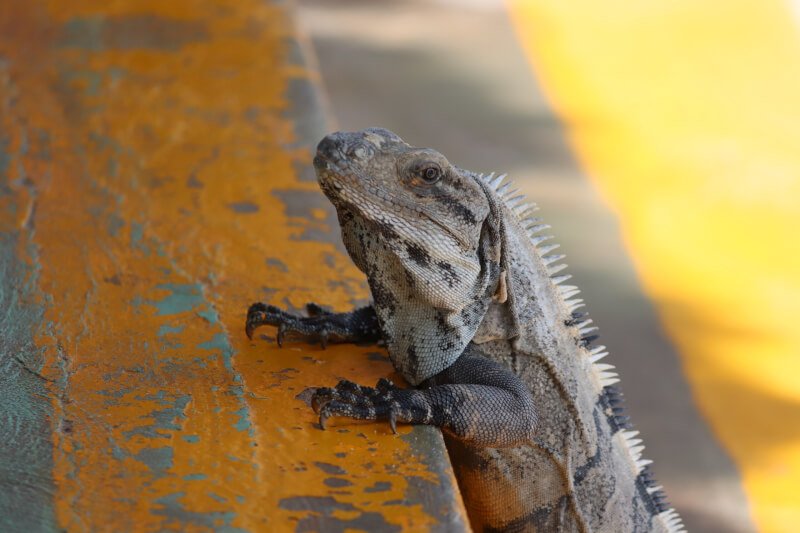
Choosing the Right Enclosure
Size of the Enclosure
When choosing an enclosure for your reptile, it is important to consider the size of the enclosure. The size of the enclosure should provide ample space for your reptile to move around, stretch, and explore. It is crucial to choose an enclosure that is large enough for your reptile’s adult size, as many reptiles grow significantly over time. A cramped or small enclosure can lead to stress and health issues for your reptile. Therefore, it is recommended to research the specific spatial needs of your particular reptile species and select an enclosure that meets those requirements.
Material of the Enclosure
Another important factor to consider when choosing an enclosure for your reptile is the material of the enclosure. There are various options available, including glass, plastic, and wood. Each material has its pros and cons, so it is essential to consider the specific needs of your reptile and their habitat requirements. Glass enclosures are popular due to their transparency, which allows for better visibility and aesthetic appeal. Plastic enclosures are lightweight and easy to clean, while wood enclosures provide a more natural and insulating environment. Consider factors such as heat retention, durability, and ease of maintenance when determining the best material for your reptile’s enclosure.
Accessibility and Security Features
When selecting an enclosure for your reptile, it is crucial to consider the accessibility and security features it offers. The enclosure should have a secure locking mechanism to prevent any unauthorized entry or escape. It is also important to ensure that the enclosure provides easy access for cleaning, feeding, and maintenance. Look for enclosures that have removable lids or doors that can be easily opened and closed without causing stress to your reptile. Additionally, consider the safety features such as escape-proof screens or vents that allow for proper ventilation and airflow within the enclosure.
Providing the Right Temperature and Lighting
Installing a Heat Source
Reptiles are ectothermic creatures, meaning they rely on external sources of heat to regulate their body temperature. It is essential to provide a suitable heat source in your reptile’s enclosure to create a thermally gradient environment. This allows your reptile to move between warmer and cooler areas as per their needs. Heat sources such as heat lamps or heating pads can be used to provide the necessary warmth. Ensure that the heat source is placed in a way that your reptile can easily access it without the risk of burns or injuries. It is recommended to use a thermostat to monitor and regulate the temperature, ensuring it remains within the optimal range for your reptile.
Using a Thermometer and Thermostat
To maintain the ideal temperature for your reptile, it is essential to use a thermometer to accurately monitor the temperature within the enclosure. Place the thermometer at the appropriate height and location within the enclosure, where your reptile typically spends most of its time. This will help ensure that the temperature readings are accurate and reflect the conditions your reptile is experiencing. For precise temperature control, it is advised to use a thermostat. A thermostat allows you to set the desired temperature range and automatically adjusts the heat source to maintain a stable and consistent temperature within the enclosure.
Determine Proper Lighting
Proper lighting is essential for your reptile’s overall health and wellbeing. Different reptile species have varying lighting requirements, so it is crucial to research the specific needs of your reptile. Most reptiles require a combination of UVA and UVB lighting to simulate natural sunlight. UVA lighting helps enhance color perception and visual activity, while UVB lighting is necessary for the synthesis of vitamin D3, essential for calcium absorption. Ensure that the lighting fixtures are securely installed and are of the appropriate intensity and wavelength for your reptile. Depending on your reptile’s needs, lighting may need to be provided for specific durations throughout the day, mimicking natural day and night cycles.
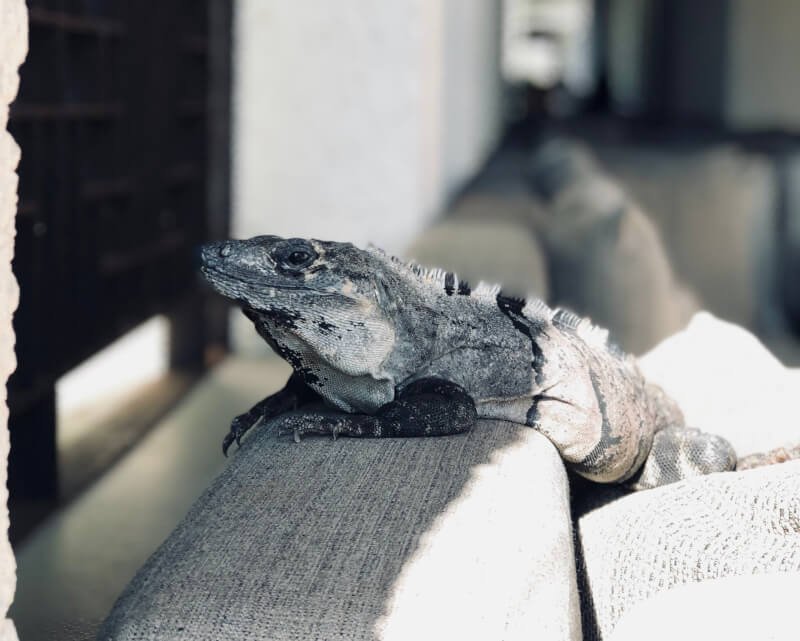
Maintaining the Proper Humidity Levels
Placing a Water Bowl
Humidity levels play a vital role in your reptile’s health and physiological processes. Placing a water bowl within the enclosure is an effective way to help maintain proper humidity levels. The size of the water bowl should be proportionate to your reptile’s size, allowing them to comfortably soak or drink from it. Regularly check and replenish the water bowl to ensure your reptile has access to clean and fresh water at all times. The water bowl should be placed in a location where it is easily accessible and won’t be easily tipped over by your reptile.
Misting the Enclosure
In addition to a water bowl, misting the enclosure is an effective way to increase humidity levels. Depending on the specific humidity requirements of your reptile, mist the enclosure with water using a spray bottle or misting system. This will create a microclimate within the enclosure and help replicate the natural habitat of your reptile. Pay attention to the specific needs of your reptile species, as some reptiles require higher humidity levels than others. Regularly monitor the humidity levels within the enclosure using a hygrometer to ensure they remain within the appropriate range.
Using a Hygrometer
A hygrometer is a device used to measure and monitor humidity levels within the enclosure. It is an invaluable tool for maintaining optimal humidity for your reptile. Place the hygrometer in an area of the enclosure where the humidity is representative of the overall conditions. This will help you make necessary adjustments to maintain the desired humidity levels. Ensure the hygrometer is calibrated properly and regularly check its accuracy. By monitoring the humidity levels, you can make any necessary adjustments, such as misting or adding additional moisture sources, to create a comfortable and healthy environment for your reptile.
Creating a Natural Substrate
Researching Native Habitats
When creating a naturalistic reptile habitat, it is crucial to research the native habitat of your reptile species. Understanding the natural environment, including the substrate composition, will help you make informed decisions and replicate a suitable habitat within the enclosure. Consider factors such as the type of soil, litter, or ground cover that is found in their native habitat. This will help determine the type of substrate materials you should use to create a natural environment for your reptile.
Choosing Suitable Substrate Materials
Selecting suitable substrate materials is important for creating a comfortable and natural habitat for your reptile. There are various options available, including coconut fiber, cypress mulch, reptile carpet, or even organic topsoil. The choice of substrate will depend on your reptile’s needs and preferences. Some reptiles may require a loose substrate for burrowing, while others may benefit from a solid substrate. Ensure that the substrate material is safe and free from any harmful additives or chemicals that could be potentially harmful to your reptile.
Avoiding Harmful Substrates
When choosing a substrate for your reptile’s enclosure, it is important to avoid using any materials that could be harmful or pose a risk to your reptile’s health. Certain substrates like sand, walnut shells, or gravel can cause impaction if ingested by your reptile. Additionally, some materials may retain moisture excessively, increasing the risk of mold or bacterial growth. Avoid using substrates with high-dust content as they can be harmful when inhaled. It is essential to prioritize the safety and wellbeing of your reptile when selecting substrate materials, choosing options that are suitable and compatible with their species.
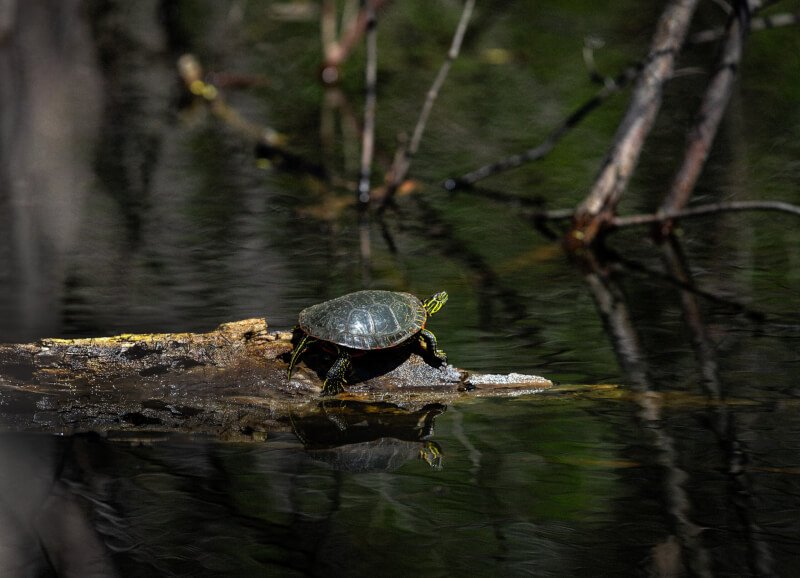
Incorporating Natural Hiding Places
Adding Rocks and Caves
Providing natural hiding places within your reptile’s enclosure is crucial to help them feel secure and reduce stress. Rocks and caves can offer a sense of safety and mimic the natural hiding spots found in their native habitats. Select rocks that are sturdy and securely placed, ensuring they do not pose a risk of falling or causing injury to your reptile. Caves can be created using various materials such as ceramic hides, hollow logs, or even securely placed plant pots. These hiding places should be easily accessible and appropriately sized for your reptile.
Using Live or Artificial Plants
Incorporating live or artificial plants in your reptile’s enclosure not only adds beauty to the habitat but also provides natural hiding places and stimulates their natural behavior. Live plants can offer additional benefits, such as improving air quality and providing a natural source of humidity. When using live plants, ensure they are non-toxic and safe for your reptile. Artificial plants can also be used, as they require less maintenance and can be easily cleaned. Choose plants that closely resemble the foliage found in your reptile’s native habitat to create a more natural and aesthetically pleasing environment.
Creating Burrowing Spaces
Some reptile species have a natural inclination to burrow or dig. Creating burrowing spaces within your reptile’s enclosure allows them to exhibit this natural behavior and provides mental stimulation. Depending on the size and needs of your reptile, you can create burrowing spaces using a substrate that allows for easy digging, such as sand or loose soil. Burrowing hides, such as half logs or tunnels, can be placed within the enclosure to provide additional opportunities for your reptile to burrow and explore. These burrowing spaces should be located in a safe and secure area within the enclosure.
Adding a Variety of Climbing and Perching Options
Installing Branches and Logs
Many reptiles are natural climbers, and providing climbing opportunities within their enclosure is important for their physical and mental wellbeing. Installing branches or logs within the enclosure allows your reptile to climb, perch, and explore their environment. Ensure that the branches or logs are securely placed and cannot easily be dislodged or cause any harm to your reptile. Choose branches or logs that are of the appropriate size and thickness for your reptile to comfortably grip and use as perches.
Creating Vertical Spaces
Creating vertical spaces within your reptile’s enclosure can help utilize the available space effectively and provide additional climbing opportunities. Vertical spaces can be created by adding shelves, ramps, or ledges within the enclosure. These spaces allow your reptile to explore different levels and engage in natural climbing behaviors. Ensure that the vertical spaces are sturdy, properly secured, and do not pose any risk of injury or escape for your reptile.
Providing Horizontal Perches
In addition to vertical spaces, it is important to offer horizontal perches within your reptile’s enclosure. Horizontal perches can be created using flat rocks, sturdy branches, or platforms. These perches provide resting spots for your reptile, mimic natural basking areas, and offer an elevated vantage point. Ensure that the horizontal perches are large enough for your reptile to comfortably sit or rest upon. The perches should be positioned in areas with appropriate lighting and temperature for your reptile to maximize the benefits of their use.
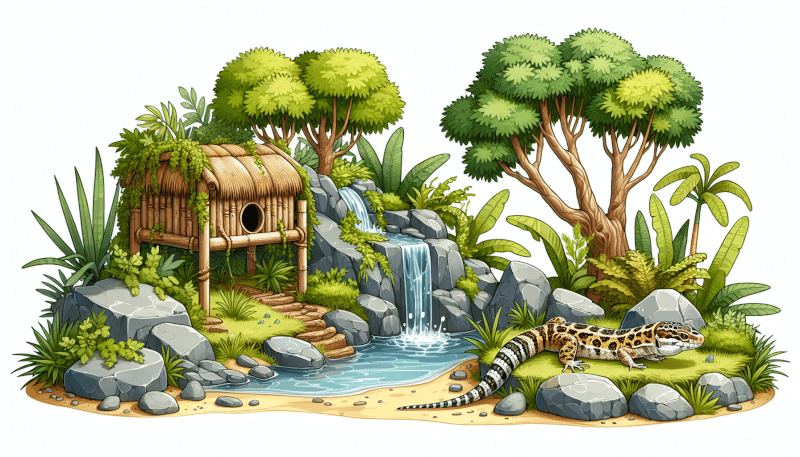
Introducing Proper Water Source and Filtration
Using Dechlorinated Water
Providing a proper water source for your reptile is essential for their hydration and overall health. Tap water often contains chlorine or other chemicals that can be harmful to reptiles. Therefore, it is important to use dechlorinated or purified water within the enclosure. Dechlorination can be achieved by allowing tap water to sit for at least 24 hours to allow the chlorine to dissipate or by using commercial dechlorination products. Ensure that the water is free from any contaminants and regularly check the water quality to maintain a clean and safe water source for your reptile.
Installing a Water Filter
To maintain a clean and healthy water source, it may be beneficial to install a water filter within your reptile’s enclosure. A water filter can help remove impurities, debris, and bacteria from the water, providing a fresh and safe water source for your reptile. Choose a filter that is appropriate for the size of your reptile’s enclosure and compatible with the type of water you are using. Regularly clean and maintain the water filter to ensure optimal performance and to prevent the buildup of harmful bacteria or contaminants.
Maintaining Clean Water
Regularly maintaining clean water is crucial to ensure your reptile’s health and prevent the growth of harmful bacteria. Replace the water in your reptile’s bowl or water source at least once a day, or more frequently if necessary. Remove any debris or uneaten food from the water to prevent contamination. Clean and disinfect the water bowl or water source regularly to prevent the buildup of harmful bacteria or algae. Regular water changes, along with proper filtration, help maintain clean and safe water for your reptile.
Offering a Diverse Diet and Feeding Schedule
Researching Natural Diet
Understanding the natural diet of your reptile species is essential for providing a diverse and balanced diet. Research the specific dietary requirements of your reptile, including the types of prey, fruits, vegetables, or supplements that are necessary for their optimal health. Some reptiles are carnivorous, while others may require a mix of plant-based and animal-based foods. It is important to replicate their natural diet as closely as possible while also considering any dietary restrictions or health conditions that may require special considerations.
Introducing Live Prey or Pellets
To ensure your reptile receives the required nutrients, it may be necessary to introduce live prey or specially formulated reptile pellets into their diet. Live prey can include insects, mice, or small fish, depending on the size and species of your reptile. These live prey items should be appropriately sized and sourced from reputable sources to ensure they are safe and nutritious for your reptile. Reptile pellets or commercial diets can also be incorporated into their diet to provide a balanced nutritional profile. Consult with a veterinarian or reptile nutritionist to determine the specific dietary requirements and feeding schedule for your reptile.
Establishing a Feeding Schedule
Establishing a regular feeding schedule is important for maintaining your reptile’s health and digestion. Different reptile species have varying feeding frequencies and portion sizes, so it is important to research the specific needs of your reptile. Some reptiles may require daily feedings, while others may only need to be fed once or twice a week. Establish a feeding schedule that aligns with your reptile’s needs, taking into consideration their age, size, and activity level. Regularly monitor your reptile’s weight and appetite to ensure they are receiving the appropriate amount and type of food.
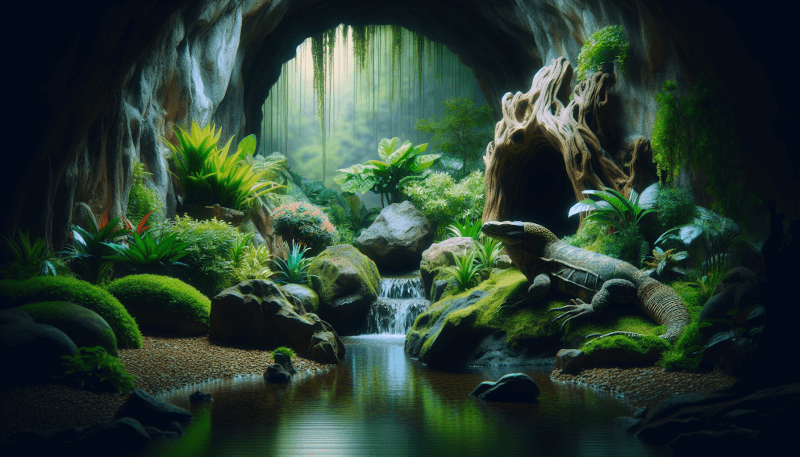
Maintaining a Clean and Hygienic Habitat
Regular Cleaning Schedule
Regular cleaning is essential to maintain a clean and hygienic habitat for your reptile. Establish a cleaning schedule that includes routine tasks such as spot cleaning, removing waste, and disinfecting surfaces. Remove any uneaten food, feces, or shed skin from the enclosure to prevent the buildup of bacteria or pests. Clean the enclosure with a reptile-safe disinfectant, ensuring that all surfaces are thoroughly cleaned and rinsed before reintroducing your reptile.
Removing Waste and Uneaten Food
Promptly remove any waste or uneaten food from your reptile’s enclosure to prevent the growth of bacteria or foul odors. Regularly check the enclosure for any leftovers or debris and promptly dispose of them. This helps maintain a clean and favorable environment for your reptile and reduces the risk of contamination or disease.
Preventing Harmful Bacteria Growth
To prevent the growth of harmful bacteria within the enclosure, it is important to establish good hygiene practices. Ensure that your hands are thoroughly washed before and after handling your reptile or performing any maintenance tasks. Avoid introducing any external contaminants or potential sources of bacteria into the enclosure. Regularly monitor the humidity levels and ensure they are within the appropriate range to prevent excessive moisture that could promote bacterial growth. Keeping the enclosure clean, dry, and well-ventilated helps maintain a healthy and hygienic habitat for your reptile.
Monitoring and Maintaining Ideal Environmental Conditions
Regular Temperature and Humidity Checks
Regularly monitor the temperature and humidity levels within your reptile’s enclosure to ensure they remain within the appropriate range. Use a reliable thermometer and hygrometer to accurately measure these parameters. Depending on your reptile’s species, you may need to adjust the temperature or humidity levels accordingly. Create a log to record these measurements and track any changes or abnormalities that may indicate a need for adjustments.
Adjusting Lighting and Heating
Based on your observations and the specific needs of your reptile, make any necessary adjustments to the lighting and heating within the enclosure. Ensure that the lighting fixtures are functioning correctly and provide the appropriate UVA and UVB wavelengths. Monitor the behavior and health of your reptile to identify any signs of discomfort or stress that may indicate inadequate lighting or heating. Regularly check the heat source and adjust it as needed to maintain the desired temperature gradient within the enclosure.
Monitoring Behavior and Health
Regularly observe your reptile’s behavior and appearance as indicators of their overall health and wellbeing. Pay attention to their eating habits, activity levels, and any physical changes or abnormal behaviors. Monitor their weight and growth patterns to ensure they are developing properly. If you notice any signs of illness, stress, or injury, consult with a veterinarian who specializes in reptile care. Be proactive in seeking professional help and addressing any health concerns to maintain the ideal environmental conditions for your reptile.
Creating a naturalistic reptile habitat requires careful consideration of various factors such as enclosure size, material, temperature, lighting, humidity, substrate, hiding places, climbing options, water source and filtration, diet, cleanliness, and environmental monitoring. By incorporating these top ways to create a naturalistic reptile habitat, you can provide a comfortable, stimulating, and secure environment that promotes the overall health and wellbeing of your reptile. Remember to always research the specific needs of your individual reptile species and consult with experts to ensure you are meeting their unique requirements. Your reptile will thrive in an environment that closely resembles their natural habitat, allowing them to exhibit their natural behaviors and live a happy and healthy life.

